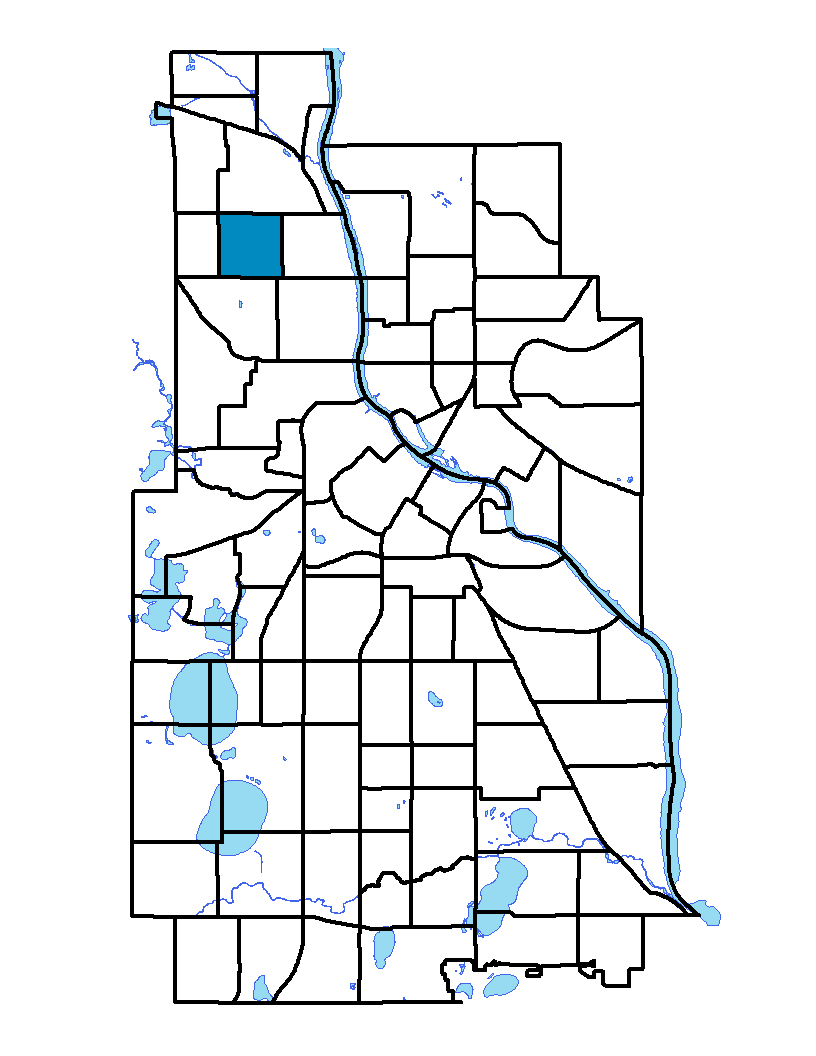"Compare Neighbordhoods" feature is not available in the archived version.
Folwell
Folwell neighborhood is located in northwestern Minneapolis, extending north to south from Dowling Avenue North to Lowry Avenue North, and east to west, from Dupont Avenue North to Penn Avenue North. The neighborhood is anchored by Folwell Park. The park and neighborhood were named for Dr. William W. Folwell, first president of the University of Minnesota. Folwell neighborhood was built at the beginning of the 20th century with mainly single-family housing for families of moderate income.
To learn more about the neighborhood association visit: www.folwell.org
Indicator Details
| Indicators | Primary Domain | Indicator Value |
Rank |
Tier |
|---|---|---|---|---|
| Vacancy Rates | Housing | 18.3% | 81 | Bottom |
| Excessive Housing Cost Burden | Housing | 48.8% | 80 | Bottom |
| Preschool Enrollment | Educational Opportunities | 21.2% | 80 | Bottom |
| Preventable Hospitalizations | Health Systems and Public Safety | 10.8 | 77 | Bottom |
| Public Assisted Households | Employment Opportunities | 59.7% | 76 | Bottom |
| Travel Time to Work | Employment Opportunities | 24.3 minutes | 76 | Bottom |
| Low Birth Weight | Health Systems and Public Safety | 13.0% | 75 | Bottom |
| Violent Crime | Health Systems and Public Safety | 95.1 | 74 | Bottom |
| Employment Rate | Employment Opportunities | 54.8% | 74 | Bottom |
| Access to Mainstream Financial Services | Economic Health | 37.8% | 73 | Bottom |
| Voter Participation | Social Cohesion | 16.0% | 72 | Bottom |
| Transit Accessibility | Transportation | 200.4 | 70 | Bottom |
| Blood Lead Levels in Children | Housing | 6.8% | 69 | Bottom |
| Adult Educational Attainment | Educational Opportunities | 80.5% | 68 | Bottom |
| Residential Mobility | Social Cohesion | 70.2% | 67 | Bottom |
| Walkability | Neighborhood Characteristics | 55 | 60 | Bottom |
| Tree Cover | Natural Areas | 26.5% | 60 | Bottom |
| Household Transportation Costs | Transportation | 18.3% | 60 | Bottom |
| Age of Housing | Housing | 87.8% | 46 | Middle |
| Business Retention | Economic Health | 1.3% | 45 | Middle |
| Motor Vehicle Collisions | Health Systems and Public Safety | 4.7 | 38 | Middle |
| Commute Mode Share | Transportation | 32.4% | 36 | Middle |
| Long-Term Unemployment | Employment Opportunities | 5.1% | 36 | Middle |
| Access to Parks and Open Space | Natural Areas | 7.5% | 35 | Middle |
| Food Desert | Neighborhood Characteristics | 100.0% | 31 | Middle |
| Local Business Vitality | Economic Health | 58.0% | 30 | Middle |
| Pedestrian Connectivity | Transportation | 150.7 | 27 | Top |
| Proximity to Brownfield Sites | Environmental Hazards | 1.5% | 26 | Top |
| Offsite Alcohol Outlets | Neighborhood Characteristics | 1 | 6 | Top |
| Residential Proximity to Traffic | Environmental Hazards | 0.0% | 1 | Top |
| Proximity to Superfund Sites | Environmental Hazards | 0.0% | 1 | Top |
| Toxic Releases from Facilities | Environmental Hazards | 0.0% | 1 | Top |
| Reading Proficiency | Educational Opportunities | -% | - | Data N/A |
| School Proximity to Traffic | Environmental Hazards | -% | - | Data N/A |
| Chronic School Absence | Health Systems and Public Safety | -% | - | Data N/A |
| High School Graduation Rate | Educational Opportunities | -% | - | Data N/A |
| School Readiness Scores | Educational Opportunities | -% | - | Data N/A |

